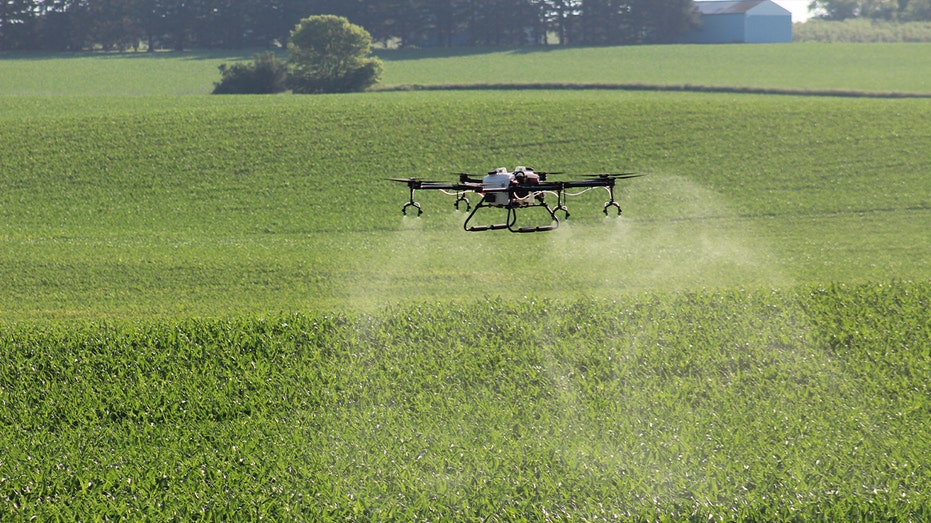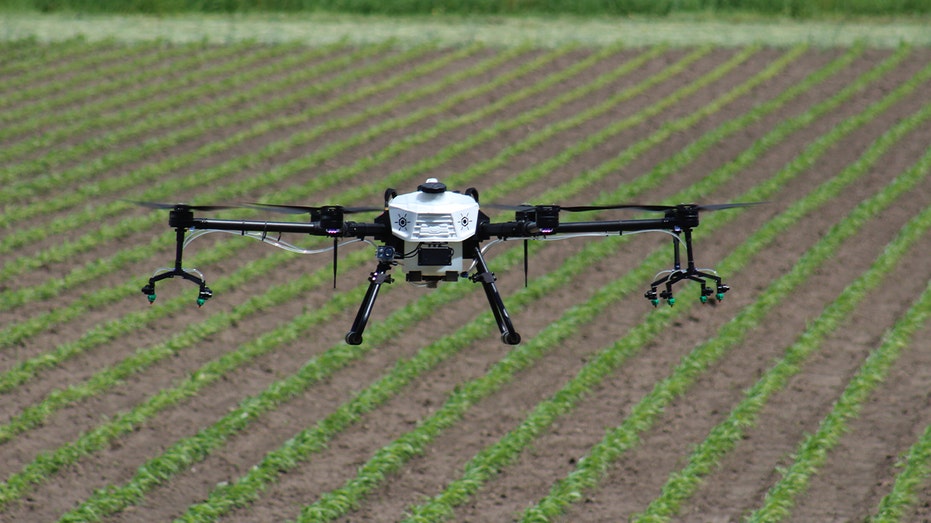Finance
US agriculture industry gears up for futuristic aerial ‘drone-swarm’ farming after FAA decision

A new exemption for drone piloting from the Federal Aviation Administration has cleared the airways for “drone-swarm” agriculture, a method of seeding and spraying crops at a fraction of the traditional cost.
Hylio, a Texas-based drone manufacturer, successfully applied for an exemption from the FAA to allow fleets of drones weighing 55 pounds or more to fly together.
It’s the first exception of its kind for machines that carry what the company calls a “meaningful payload” and makes the process competitive with traditional tractors and seeding rigs.
“On average, you’re spending a quarter both up front, capital cost to buy the machinery, and operating cost is about a quarter or maybe a third of what you’d spend for the traditional stuff,” Arthur Erickson, Hylio’s CEO, told Fox News Digital.
SEE IT: AMAZON’S NEW PRIME DRONE IN ACTION
Even a set of three drones costs substantially less than a single tractor. They use less water to carry chemicals, causing less soil compaction, and only a fraction of the fuel for generators to recharge batteries in the field. And Hylio doesn’t charge a subscription fee for its software, Erickson said.
Under previous rules, a single drone required a pilot and another person acting as a spotter. Because of weight limitations in flight, it took a long time to cover large fields.
Now the two-person team can fly up to three drones at once in a “swarm,” covering triple the area in the same time, making it almost as fast as a conventional tractor.

TRACTOR HACK: FARMERS ARE HARNESSING HACKED SOFTWARE FOR JOHN DEERE REPAIRS
Andy Kreikemeier, a Nebraska farmer behind Infinity Precision Ag, says he began using drones about six months ago, primarily in hard-to-reach places.
In addition to the pilot and the spotter, his operation also includes a third person to refill the drone.
“Now we can run three drones with two people with this exemption,” he told Fox News Digital. “So, not only are we increasing our coverage time frame with using three drones, but we’re lessening the time and the amount of people we have to have on site.”

With another pilot and another tracker, he could run a fleet of six drones at the same time and cover even more ground without running over crops or compacting more soil under the wheels.
Drones begin at around $50,000 per unit, according to Hylio. A conventional tractor can cost more than $300,000, with some high-end models going for over $700,000.
“They’re so expensive,” Erickson said. “Over half a million for a brand-new tractor these days, while we’re still reeling from the COVID stuff, supply train issues.”
Kreikemeier said he paid about $80,000 each for his fully-loaded drones from Hylio.
The machines have a multitude of uses, Erickson said.
In addition to spraying and seeding farmland, some have been used to drop tree seeds in areas scorched by wildfires, and aquatic farmers have used them to seed their water with clams.
“The sky’s the limit,” Erickson said.
Read the full article here


















